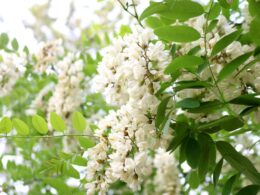What is a Cleome Plant?
The Cleome flower is an annual flowering plant that can reach up to five feet in height. It is native to tropical and subtropical regions of the Americas, but it has been introduced to other parts of the world as well. The Cleome plant has small, inconspicuous flowers that are usually white, purple or pink in color. The plant’s leaves are simple and toothless, and its stem is covered in spines.
The spider plant is often grown as an ornamental plant, but it can also be used for medical purposes. The leaves of the Cleome plant are said to have diuretic properties, and the stem can be used to make a type of rope.
Growing Cleomes
Growing Cleomes from seed is a relatively easy process that can be done in just a few steps.
- The first step is to fill a seed tray with moistened potting mix.
- Then, scatter the seeds across the surface of the mix and lightly press them in.
- Next, place the tray in a warm, sunny location and keep the mix moist.
- Once the seeds have germinated, thin them out so that only the strongest seedlings remain.
- Finally, transplant the seedlings into individual pots or into the garden once they have grown large enough to handle.
With a little care, Cleomes will thrive and produce beautiful blooms all summer long.
Potting and Repotting Cleomes
These tall plants are easy to care for and make excellent cut flowers. However, Cleomes can become leggy and overgrown if they are not given enough room to grow. When potting or repotting Cleomes, be sure to use a pot that is at least 12 inches wide and 18 inches deep.
Cleome flowers prefer well-drained soil and full sun, so be sure to use a potting mix that contains plenty of perlite or sand. Water the plants thoroughly after repotting, and then place them in a sunny spot. With a little care, your Cleome flowers will thrive and add a touch of magic to your garden.
Getting Your Cleome Flower to Bloom
Although they are often considered to be weeds, Cleomes can add a touch of elegance to any garden. These tall annuals are covered in small, spiky flowers that come in a wide range of colors. Getting Cleomes to bloom is relatively easy, and there are a few simple steps that gardeners can take to ensure that their plants produce an abundance of flowers.
- First, it is important to choose a sunny spot for planting, as Cleomes need lots of sunlight in order to bloom.
- Additionally, the soil should be well-drained and fertile.
- Gardeners should also wait with their plants until after the last frost date, as Cleomes are sensitive to cold temperatures.
- Once the plants are in the ground, regular watering and fertilizing will help encourage blooming.
With a little care, Cleomes can add a splash of color to any garden.
Common Problems With Cleomes
Cleomes are beautiful, versatile annuals that can add a touch of drama to any garden. However, they can also be finicky plants, and there are a few common problems that gardeners should be aware of.
- First, Cleome flowers are susceptible to powdery mildew, a fungal disease that causes the leaves to develop a white powdery sheen. Powdery mildew is most often seen in areas with high humidity, so it’s important to provide good air circulation around your Cleomes.
- Second, Cleomes can be attractive to aphids, small sap-sucking insects that can cause the leaves to turn yellow and eventually drop off. To control aphids, you can either spray them with water or dust them with an insecticidal soap.
- Lastly, Cleome flowers sometimes self-seed, which means that they can come up in places where you don’t want them. To prevent this from happening, you can deadhead your Cleomes regularly or plant them in pots. By taking a few simple precautions, you can enjoy these beautiful flowers without any problems.
How to Propagate the Spider Flower Plant
If you’re interested in growing this plant in your own garden, here’s what you need to know about propagation. To propagate from seed, simply sow the seeds in a well-drained potting mix and keep them moist until they germinate. Once the seedlings are big enough to handle, transplant them into individual pots and allow them to grow on for a few more weeks before planting them out in the garden.
If you’re propagating from cuttings, take 4-6 inch cuttings from healthy stems and root them in a pot of moist potting mix. Keep the cuttings warm and humid until they develop roots, then transplant them into individual pots and allow them to grow on before planting them out in the garden. With just a little patience and effort, you can easily propagate your own spider flower plants!
Usage & Benefits of Cleomes
Cleome plants are beautiful, unique flowers that make excellent gifts and add interest to any garden. They also have a number of medicinal properties. They have been used to treat ulcers, acne and other skin conditions. In addition, Cleomes can be used as an insecticide and have been shown to repel mosquitoes. Cleome flowers are also thought to have anti-inflammatory properties.
When given as a gift, Cleomes represent friendship, loyalty and support. They are also symbolic of new beginnings. Whether you’re looking for a unique gift or hoping to add some interest to your garden, consider giving Cleomes a try. You’ll be glad you did! That’s all folks! Happy gardening and good luck planting your Cleome flower!



















